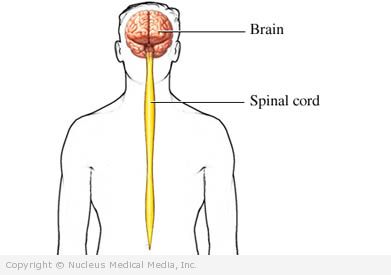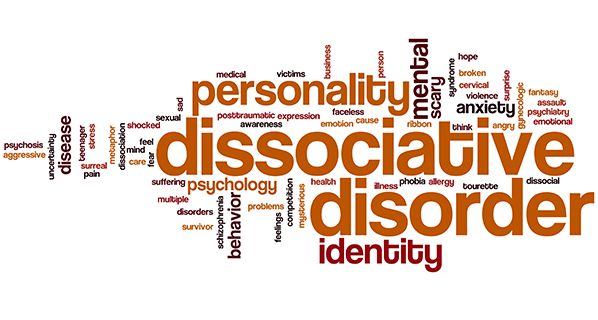(Autism Spectrum Disorders; Pervasive Developmental Disorders)
Autism – Definition
Autism represents a spectrum of complex brain disorders resulting in social, behavioral, and communication problems. Other conditions that are part of this spectrum include Asperger syndrome and pervasive developmental disorder. In the US, autism spectrum disorders affect about 1 in 100 children aged 3-17 years old.
Autism – Causes
Autism is a neurodevelopmental disorder. This means that problems in brain development cause autism. Scientists are searching for answers about what causes these development problems. Studies suggest:
- Autism seems to run in some families. Several genes may be involved.
- Problems during pregnancy or delivery may interfere with normal brain development.
- Something in the environment that a child is exposed to may be a factor.
Autism – Risk Factors
These factors increase your chance of developing autism:
- Sex: male (Boys are four times more likely to have autism than girls.)
- Family history: siblings of a child with autism have a 3%-7% chance of being autistic.
- A number of other conditions are associated with autism, although the relationship between them is not clear:
- Neurofibromatosis
- Tuberous sclerosis
- Fragile X syndrome
- Phenylketonuria (PKU)
- Möbius syndrome
- Epilepsy
- Herpes encephalitis
- Cytomegalovirus
- Problems during pregnancy or delivery
- Contracting rubella during pregnancy (a risk for the child)
- Having parents who are older
Autism – Symptoms
Autism usually first appears during early childhood (2-6 years old). The severity of symptoms varies over a wide spectrum. Behaviors and abilities may differ from day to day; symptoms may decrease as the child grows older. Children with autism may exhibit a combination of abnormal behaviors.
Symptoms include:
- Avoiding social contact
- Having problems with language (loss of language)
- Using words incorrectly, changing the meaning of a common word
- Gesturing frequently
- Avoiding eye contact
- Having trouble with nonverbal communication
- Lacking interest in normal activities for that age
- Spending a lot of time alone
- Not playing imaginatively
- Not starting pretend games
- Not imitating others
- Having sensitivity to sound, smell, taste, sights, and touch
- Responding to stimulation in an abnormal way
- Not reacting to smiles in the manner expected
- Being hyperactive
- Being passive
- Having tantrums
- Being single-minded
- Being aggressive
- Hurting self (self-mutilation)
- Engaging in repetitive movement, such as rocking or flapping a hand
- Resisting change
- Forming odd attachments to objects
- Sniffing or licking of toys
- Not understanding other peoples’ feelings and needs
- Having constipation and being a picky eater
Some people with autism suffer from other disorders as well, including:
- Seizures
- Intellectual disability
- Genetic disorders, such as fragile X syndrome
Autism – Diagnosis
Doctors who specialize in autism will observe the child’s behavior, social contacts, and communication abilities. They will assess mental and social development and ask parents about the child’s behavior. Some doctors ask parents to bring in videos of the child at home.
Tests may include:
- Neuropsychological tests
- Questionnaires and observation schedules
- Intelligence tests
Medical tests to rule out other conditions that cause similar symptoms may include:
- Blood tests
- Urine tests
- DNA testing
- Electroencephalogram (EEG) — a test that records the brain’s activity by measuring electrical currents through the brain
Autism – Treatment
There is no cure for autism. The severity of symptoms may decrease over the years. But the condition lasts for life. Children with autism and their families may benefit from early intervention. For instance, children aged 18-30 months who participate in high-intensity intervention targeting developmental behavior, showed improvements in their IQ, language, and adaptive behavior.
Children with autism respond well to a structured, predictable schedule. With help, many children with autism learn to cope with their disabilities. Most need assistance and support throughout their lives. Others are able to work and live independently when they grow up.
Interventions to help children with autism include:
Special Education
Programs designed to meet the child’s special needs improve the odds of learning. Children with autism may have trouble with assignments, concentration, and anxiety. Teachers who understand the condition can build on the child’s unique abilities. Programs should incorporate the child’s interests. Some children do better in a small-group setting. Others do well in regular classrooms with special support. Vocational training can help prepare young adults for a job.
Therapy Services
Speech, physical, and occupational therapies may improve speech and activities. Children with autism need help developing social skills. Mental health professionals also help a family cope with caring for a child with autism. Counselors help parents learn how to manage behaviors.
Medication
Although there are no drugs to treat autism, several drugs are used to help manage symptoms. Aripiprazole and risperidone are the only drugs currently approved by the United States Food and Drug Administration (FDA) for treating behaviors associated with autism. Medicines for anxiety and depression can also help treat obsessive and aggressive behaviors. Your child’s doctor may use other medicines to help control other disruptive behaviors.
Other Therapies
There are other treatments available, such as dietary changes and alternative therapies. Talk with your child’s doctor first to see if any of these would be helpful for your child.
Autism – Prevention
There are no guidelines for preventing autism because the cause is unknown. Scientists are searching for its underlying causes.


